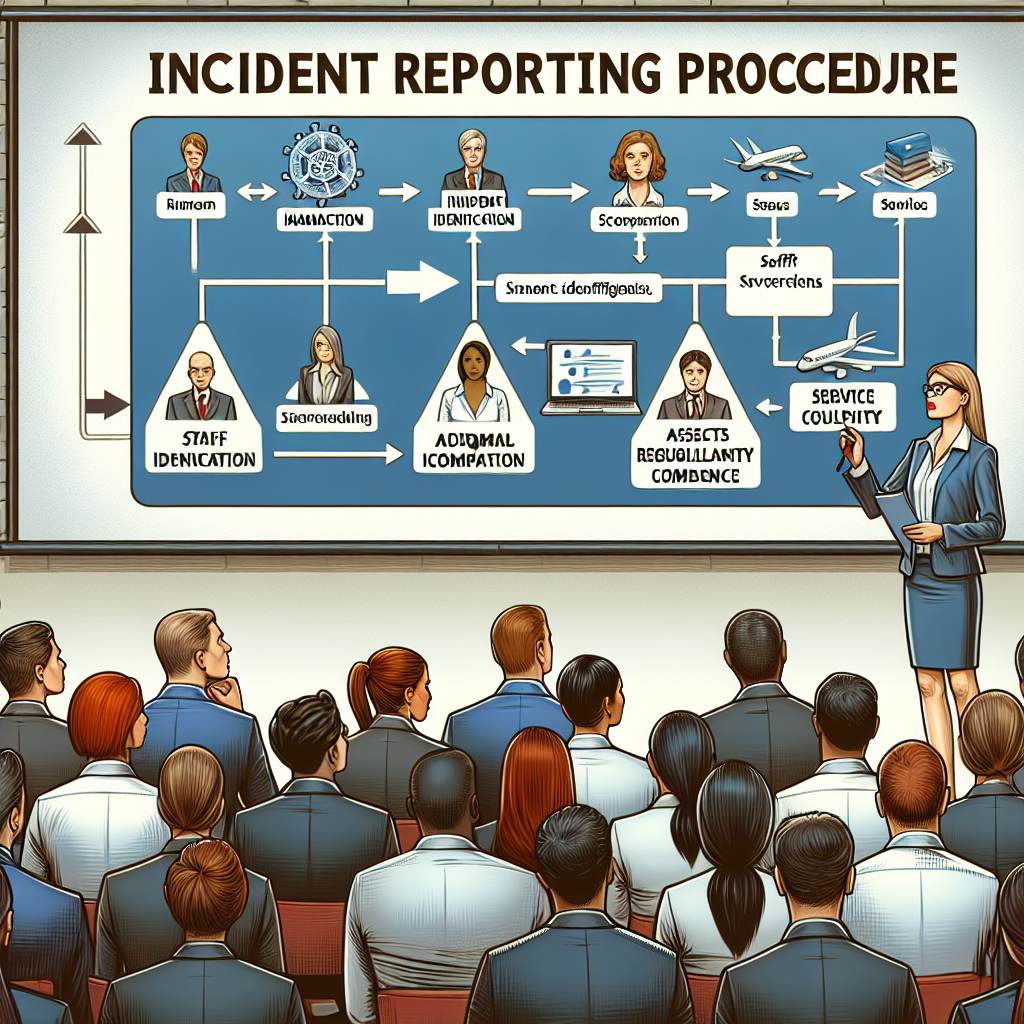A comprehensive guide on how to properly report incidents in the workplace.
Introduction to Incident Reporting Procedures
Incident reporting is a critical process used in various environments to ensure safety, improve operations, and comply with regulations. It involves documenting any occurrences that deviate from normal operations, pose a threat to staff, clients, or assets, or impact the quality of service.
This guide outlines detailed steps to effectively handle and report these incidents to facilitate a systematic approach that ensures all relevant incidents are addressed appropriately.
Understanding What Constitutes an Incident
Before diving into the reporting procedures, it is important to understand what incidents need to be reported. An incident can include but is not limited to accidents, injuries, property damage, security threats, and system failures. Identifying what qualifies as an incident within your organization is the first step in developing an effective reporting procedure.
Step 1: Immediate Response
The first step in any incident reporting procedure is the immediate response. This involves taking immediate action to ensure safety and mitigate further risks. Depending on the incident, this could mean evacuating the area, administering first aid, or isolating a hazard. The key is to act quickly and effectively to prevent any further complications or harm.
Step 2: Notification of Relevant Parties
Once immediate actions have been taken, the next step is to notify all relevant parties about the incident. This typically includes supervisors, safety officers, and, if necessary, emergency services. Timely notification is crucial to ensure that the incident is managed properly and that all necessary actions are taken without delay.
Step 3: Documentation of the Incident
Documentation is a critical part of incident reporting. This step should be carried out as soon as possible after the incident occurs to ensure that details are recorded accurately. Documentation should include:
- The date and time of the incident
- A detailed description of what happened
- Names and statements of witnesses
- Any injuries or damages that occurred
- Photos or videos, if applicable
- Actions taken in response to the incident
This information will be crucial for future investigations and for developing preventative measures to avoid similar incidents.
Step 4: Submission of the Report
Once the incident has been documented, the report should be submitted to the designated authority within your organization. This could be a safety manager, HR department, or directly to a senior executive, depending on the company’s policy. The report should be detailed, clear, and factual, avoiding any personal biases or opinions.
Step 5: Review and Investigation
After the incident report is submitted, it should be reviewed by the responsible authorities to verify its accuracy and completeness. An investigation may be conducted to understand the root causes of the incident, identify failings in existing protocols, and develop improvements. This step is vital for learning from the incident and preventing recurrence.
Step 6: Follow-Up Actions
Based on the findings from the investigation, follow-up actions should be implemented. These could include:
- Training or retraining employees
- Updating or developing new policies and procedures
- Making physical changes to the workplace
- Implementing new safety measures
It is important that all follow-up actions are tracked and monitored to ensure that they are effective and that compliance with new or revised procedures is being maintained.
Step 7: Feedback and Continuous Improvement
The final step in the incident reporting process is to solicit feedback from those involved in the incident and those who manage the reporting process. This feedback should be used to continuously improve the incident reporting procedures and overall safety measures within the organization. Continuous improvement is key to developing a proactive safety culture that strives to prevent incidents before they occur.
Effective incident reporting is essential for maintaining a safe and efficient working environment. By following these detailed steps, organizations can ensure that all incidents are reported promptly, documented accurately, and investigated thoroughly. This systematic approach not only helps in managing the immediate effects of the incidents but also contributes to long-term preventive strategies. Remember, the goal of incident reporting is not just to record facts, but to learn from them and implement changes that improve safety and operations.
Regular training on incident reporting procedures for all employees will ensure everyone understands their role in the process and is prepared to act accordingly when an incident occurs. By fostering a culture of safety and continuous improvement, organizations can significantly reduce the likelihood of incidents and ensure a safer workplace for all employees.




